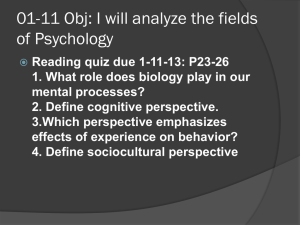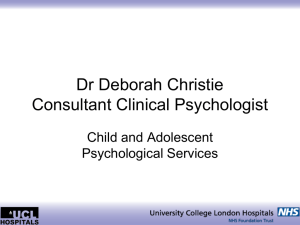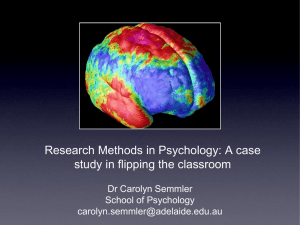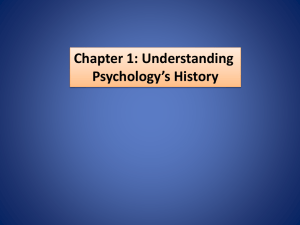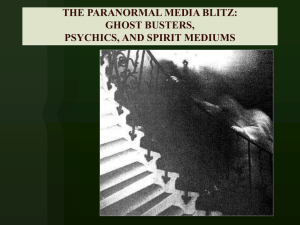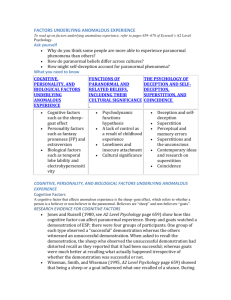Poster Template - Fort Lewis College
advertisement
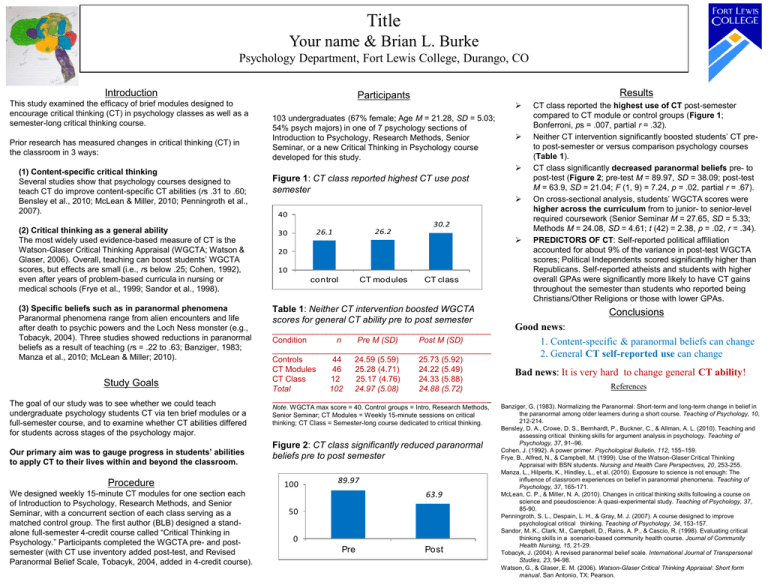
Title Your name & Brian L. Burke Psychology Department, Fort Lewis College, Durango, CO Introduction This study examined the efficacy of brief modules designed to encourage critical thinking (CT) in psychology classes as well as a semester-long critical thinking course. Prior research has measured changes in critical thinking (CT) in the classroom in 3 ways: (1) Content-specific critical thinking Several studies show that psychology courses designed to teach CT do improve content-specific CT abilities (rs .31 to .60; Bensley et al., 2010; McLean & Miller, 2010; Penningroth et al., 2007). (2) Critical thinking as a general ability The most widely used evidence-based measure of CT is the Watson-Glaser Critical Thinking Appraisal (WGCTA; Watson & Glaser, 2006). Overall, teaching can boost students’ WGCTA scores, but effects are small (i.e., rs below .25; Cohen, 1992), even after years of problem-based curricula in nursing or medical schools (Frye et al., 1999; Sandor et al., 1998). (3) Specific beliefs such as in paranormal phenomena Paranormal phenomena range from alien encounters and life after death to psychic powers and the Loch Ness monster (e.g., Tobacyk, 2004). Three studies showed reductions in paranormal beliefs as a result of teaching (rs = .22 to .63; Banziger, 1983; Manza et al., 2010; McLean & Miller; 2010). Study Goals The goal of our study was to see whether we could teach undergraduate psychology students CT via ten brief modules or a full-semester course, and to examine whether CT abilities differed for students across stages of the psychology major. Our primary aim was to gauge progress in students’ abilities to apply CT to their lives within and beyond the classroom. Procedure We designed weekly 15-minute CT modules for one section each of Introduction to Psychology, Research Methods, and Senior Seminar, with a concurrent section of each class serving as a matched control group. The first author (BLB) designed a standalone full-semester 4-credit course called “Critical Thinking in Psychology.” Participants completed the WGCTA pre- and postsemester (with CT use inventory added post-test, and Revised Paranormal Belief Scale, Tobacyk, 2004, added in 4-credit course). Results Participants 103 undergraduates (67% female; Age M = 21.28, SD = 5.03; 54% psych majors) in one of 7 psychology sections of Introduction to Psychology, Research Methods, Senior Seminar, or a new Critical Thinking in Psychology course developed for this study. Figure 1: CT class reported highest CT use post semester 40 30 26.1 26.2 control CT modules 30.2 20 10 CT class Table 1: Neither CT intervention boosted WGCTA scores for general CT ability pre to post semester ________________________________________________ Condition n Pre M (SD) Post M (SD) ________________________________________________ Controls 44 24.59 (5.59) 25.73 (5.92) CT Modules 46 25.28 (4.71) 24.22 (5.49) CT Class 12 25.17 (4.76) 24.33 (5.88) Total 102 24.97 (5.08) 24.88 (5.72) ________________________________________________ Note. WGCTA max score = 40. Control groups = Intro, Research Methods, Senior Seminar; CT Modules = Weekly 15-minute sessions on critical thinking; CT Class = Semester-long course dedicated to critical thinking. Figure 2: CT class significantly reduced paranormal beliefs pre to post semester 100 89.97 63.9 50 0 Pre Post CT class reported the highest use of CT post-semester compared to CT module or control groups (Figure 1; Bonferroni, ps = .007, partial r = .32). Neither CT intervention significantly boosted students’ CT preto post-semester or versus comparison psychology courses (Table 1). CT class significantly decreased paranormal beliefs pre- to post-test (Figure 2; pre-test M = 89.97, SD = 38.09; post-test M = 63.9, SD = 21.04; F (1, 9) = 7.24, p = .02, partial r = .67). On cross-sectional analysis, students’ WGCTA scores were higher across the curriculum from to junior- to senior-level required coursework (Senior Seminar M = 27.65, SD = 5.33; Methods M = 24.08, SD = 4.61; t (42) = 2.38, p = .02, r = .34). PREDICTORS OF CT: Self-reported political affiliation accounted for about 9% of the variance in post-test WGCTA scores; Political Independents scored significantly higher than Republicans. Self-reported atheists and students with higher overall GPAs were significantly more likely to have CT gains throughout the semester than students who reported being Christians/Other Religions or those with lower GPAs. Conclusions Good news: 1. Content-specific & paranormal beliefs can change 2. General CT self-reported use can change Bad news: It is very hard to change general CT ability! References Banziger, G. (1983). Normalizing the Paranormal: Short-term and long-term change in belief in the paranormal among older learners during a short course. Teaching of Psychology, 10, 212-214. Bensley, D. A., Crowe, D. S., Bernhardt, P., Buckner, C., & Allman, A. L. (2010). Teaching and assessing critical thinking skills for argument analysis in psychology. Teaching of Psychology, 37, 91–96. Cohen, J. (1992). A power primer. Psychological Bulletin, 112, 155–159. Frye, B., Alfred, N., & Campbell, M. (1999). Use of the Watson-Glaser Critical Thinking Appraisal with BSN students. Nursing and Health Care Perspectives, 20, 253-255. Manza, L., Hilperts, K., Hindley, L., et al. (2010). Exposure to science is not enough: The influence of classroom experiences on belief in paranormal phenomena. Teaching of Psychology, 37, 165-171. McLean, C. P., & Miller, N. A. (2010). Changes in critical thinking skills following a course on science and pseudoscience: A quasi-experimental study. Teaching of Psychology, 37, 85-90. Penningroth, S. L., Despain, L. H., & Gray, M. J. (2007). A course designed to improve psychological critical thinking. Teaching of Psychology, 34, 153-157. Sandor, M. K., Clark, M., Campbell, D., Rains, A. P., & Cascio, R. (1998). Evaluating critical thinking skills in a scenario-based community health course. Journal of Community Health Nursing, 15, 21-29. Tobacyk, J. (2004). A revised paranormal belief scale. International Journal of Transpersonal Studies, 23, 94-98. Watson, G., & Glaser, E. M. (2006). Watson-Glaser Critical Thinking Appraisal: Short form manual. San Antonio, TX: Pearson.





